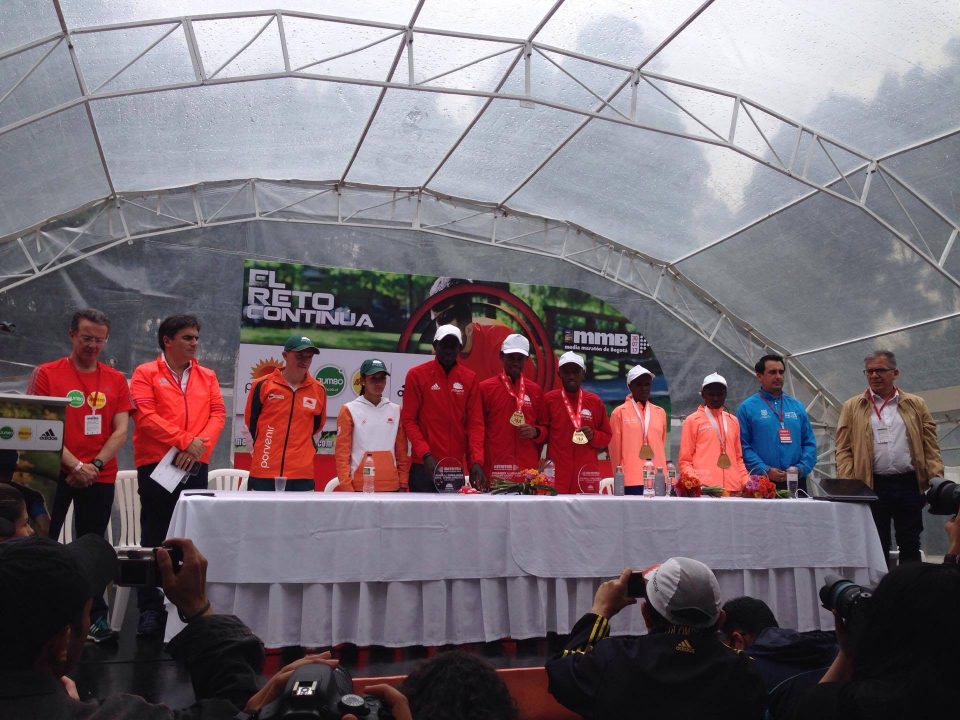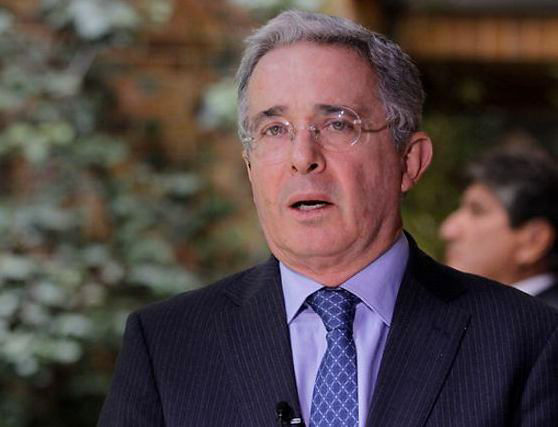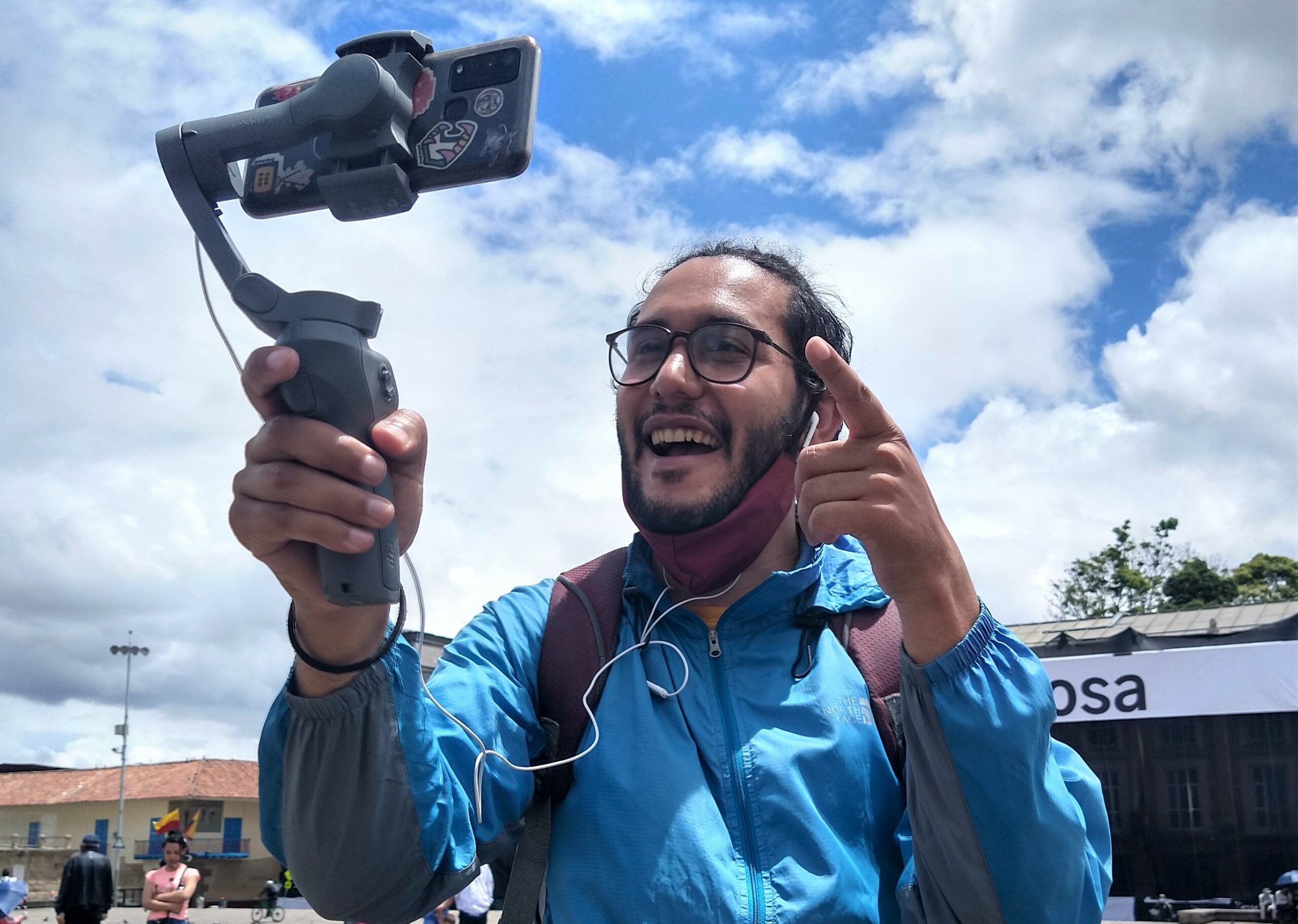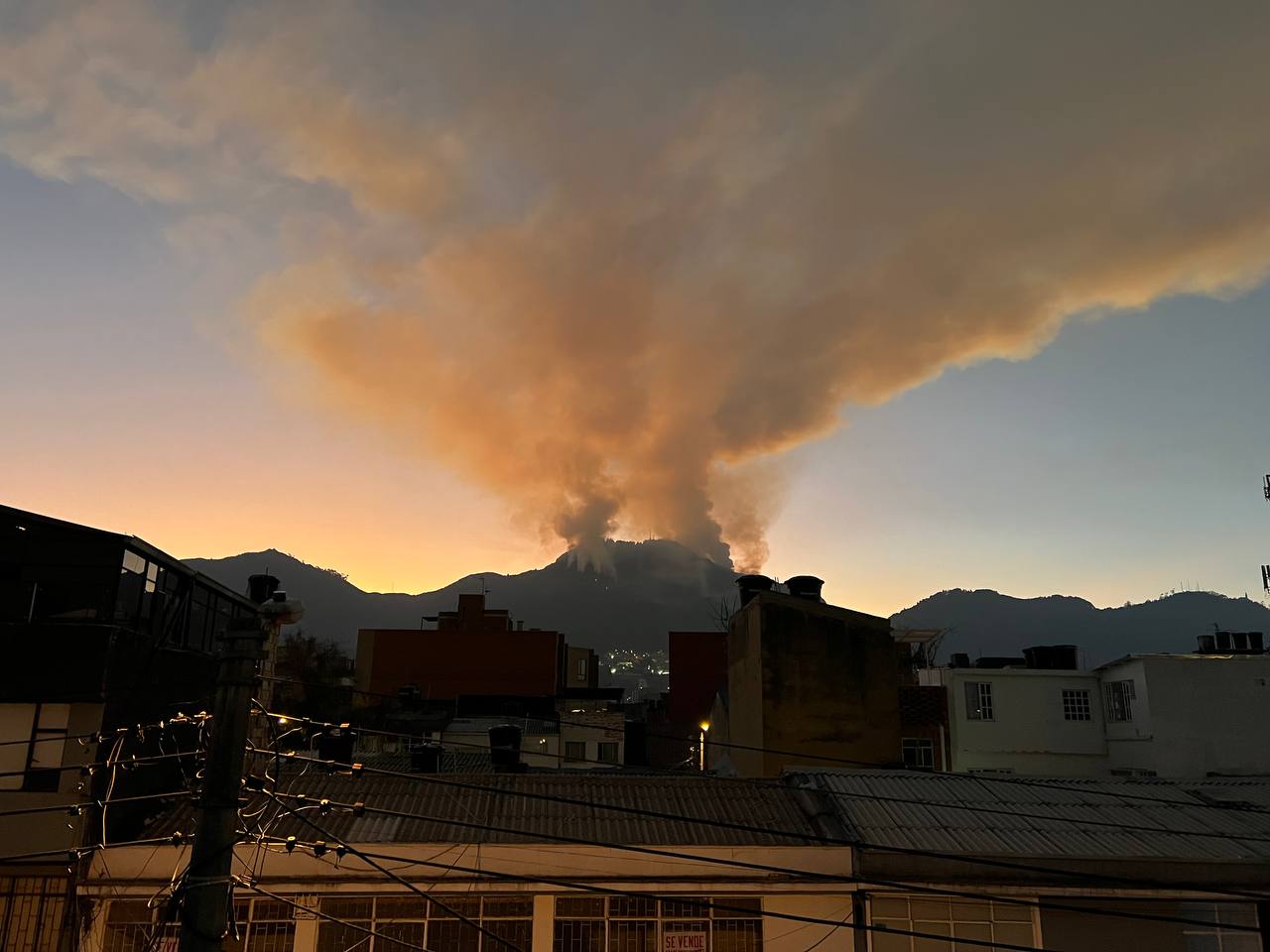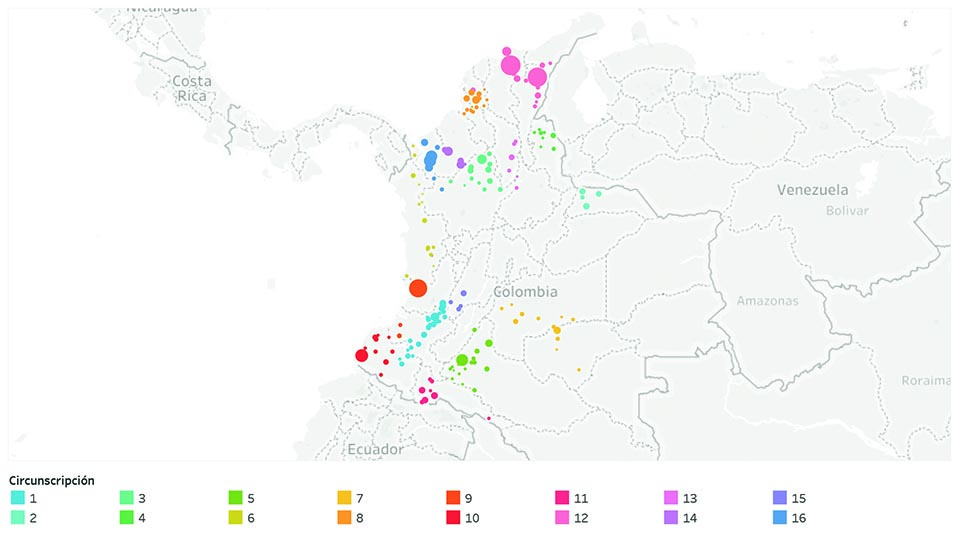
The Circunscripciones Especiales Transitorias de Paz: special peace constituencies that will guarantee congressional representation to the areas worst affected by violence Source: OpenStreetMap.org CC BY-SA
While it’s important to have measurable indicators like the total weapons handed in, it’s the intangible factors like the numbers of lives and human connections that are rebuilt after decades of violent conflict that really matter.
“I support the peace accord, I really want the armed conflict to end… I want to forgive them, but I also need them to tell me the truth.” Ines (name changed) was almost killed by the FARC in one of the guerrilla’s rural strongholds a few years ago, but she still doesn’t know why. Her story, like those of many others, shows the disproportionate impact the armed conflict has had on Colombia’s rural population.
To combat part of this problem, the Havana peace deal envisages Circunscripciones Especiales Transitorias de Paz – special peace constituencies that will temporarily guarantee representation of the most affected territories in congress. It would effectively redraw the Colombian democratic map, giving extra seats to the special constituencies. However, the bill that creates these new constituencies has not yet been passed. Time is of the essence, as the special fast-track procedure to quickly implement peace measures is due to end in November. If the bill doesn’t pass before then, no representatives from the peace constituencies will be able to run in the upcoming parliamentary elections in March 2018.
Usually, when we think about peace processes, it’s all about the “big issues” that can easily be measured, such as the numbers of reintegrated combatants or the weapons they have handed over. But many of the long-term challenges facing post-conflict Colombia can’t be broken down into numbers, especially when it comes to restoring social and human relations in the once conflict-ridden countryside. This is mainly due to the complex demographics and intertwined social networks in these areas.
Related: FARC swap rifles for roses
For one thing, the population in rural regions can’t be neatly divided into groups, as they often overlap. Many civilians have been victimised by all the actors involved in the conflict in one way or another. In addition, while some people may be open to living side by side with ex-combatants as they are relatives or friends, others have family members in two opposing groups at the same time: some may have joined the paramilitaries or the army, while others were with the guerrilla.
Ex-combatants who were minors when they joined the guerrilla pose another challenge to peaceful coexistence in the territories. A lot has been said about forced child recruitment within the FARC, but many of the under 15-year-olds who joined the insurgency actually did so voluntarily either in an effort to escape violence in their community, or simply because they wanted to be part of a group that promised social ties, food and protection. Despite the many dangers and implied risks of signing up, many of these teens adopted a cultura guerrillera – an identity that revolves around social values, music and other non-violent customs that they are likely to retain.
Naturally, the demobilised combatants must also prepare to give up certain things. For many, this includes accepting their loss of power in the communities they once controlled. As armed individuals, they were able to forcibly impose their rules and decisions on civilians. The end of the armed conflict, however, is changing these power relations. At the same time, angry civilians may take advantage of the fact that the FARC are now unarmed, making them easy prey for threats and attacks of revenge. Some may be able to deal with these legitimate emotions, but for those who aren’t, a lot will depend on the work of territorial organisations. Moreover, ex-guerrilla members can contribute to reducing the hate by committing themselves to telling the truth, recognising their mistakes and rebuilding communities together with civil society.
All of these issues are about to become a reality as the transitional camps are currently being transformed into training and reintegration zones. According to the Universidad Nacional’s socioeconomic census, 66% of ex-combatants come from the countryside, and 15% are from rural areas of the cities. Most of them are peasant farmers and want to continue working in their profession. As a woman in an affected community once pointed out: “Now, we are not two communities anymore, but one. We, both sides, need to learn how to live like that.”
This two-way process won’t be easy: On the one hand, ex-combatants need to respect civilian rights and achievements, such as the communitarian councils established by the afro population or the indigenous reserves. Civil society, on the other hand, will need to accept non-violent guerrilla customs, values and the internal cohesion that is likely to persist within their now unarmed groups.
Of course, there are numerous other risks in rural contexts: many regions formerly controlled by the FARC have become a battlefield for different legal and illegal groups on the hunt for natural resources (such as gold, petrol and coca) and social control. As the numbers of attacks against human rights defenders and social leaders show, rural Colombia continues to be a region under threat. Paramilitary groups, but also the ELN and FARC dissidents are still strong in some regions of the country. All those groups compromise the implementation of the peace accord and, as a consequence, the possibility of fruitful local processes for peace and reconciliation.
Related: Four steps towards lasting peace in Colombia
The idea of “territorial peace” is repeated at least 118 times in the peace agreement. But what does that actually imply? It means thinking about these local processes, relations and dimensions of conflict, violence and peace, and not just on a macro level. It implies the need to listen to one another and accept each other’s reality to overcome social stigmas. As the scholar Luc Huyse said, reconciliation “is not an event but a process, and as such usually a difficult, long and unpredictable one, involving various steps and stages.” These stages include moving towards a state of coexistence, trust and empathy, all of which will be indispensable for real and lasting peacebuilding in Colombia.
Julia Lledín holds a degree in political science from the Universidad Complutense in Madrid and a Master’s degree in Human Rights from the Universidad Nacional de Educación a Distancia. She has worked with human rights and peacebuilding organisations in Colombia, such as the CINEP and the Permanent Committee for the Defence of Human Rights as well as local organisations and communities in rural areas affected by the armed conflict.

